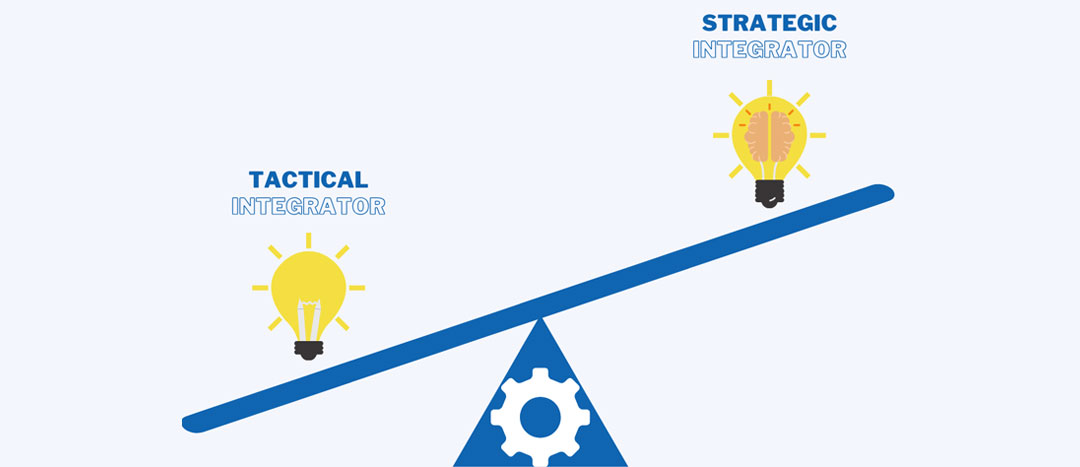Do you have an integration strategy?

(Excerpt from 3sixty Research Note published Spring 2023)
There are two ways to view integration. Where do you stand between the tactical and the strategic approach of integration?
The tactical, reactive integrators view integration as a problem to solve, and they are only interested in connecting the systems with a custom solution according to each customer’s specific context.
This contrasts with the second one, the strategic integrators’ vision who:
- Want an integration solution that can scale
- Seek to connect to as many end systems as possible
- Wish to connect as many customers as possible with the same flexible solution
- Care about fast and easy implementations
- Strive for easy capabilities in mass-versioning
It’s easy to see how a strategic, proactive attitude toward integration leads to various desirable customer outcomes (and, by corollary, the vendor). It standardizes and productizes integration, brings order to the customer experience, and enables users to exploit the best functionality found in the solution. Implementation timelines are shortened, and costs decrease. Proactive, strategic integration helps to cultivate the customer–vendor relationship and confers a formidable competitive advantage for the vendor. This, the best-in-class integration mindset, supports complex configurations for tailored user experiences and highly configurable software. It is mass-upgradeable, versionable, and customizable.
Moving From Reactive to Proactive With a Sound Integration Strategy
Whether localized to HCM systems or enterprise-wide, integrating the software stack right is a challenging matter of expecting a point-to-point API integration to perform as its implementers wished at the outset. What’s viewable above sea level is just the tip of the Integration Iceberg, whose total mass will outstrip the effectiveness of traditional approaches to integration. This is because all those issues lurking beneath the surface bring about The Wall Effect: problems originating with inadequate practices mount—not linearly, but exponentially; picture a hockey stick graph spiking upward in the direction of wrong places. Deeper than this, typical iPaaS providers can address fundamental issues with integration only to a point. Bereft of a computer language to work in integrations, their work is cut out for them, and some of it is beyond their abilities. A sound integration strategy accepts that integration is continual; it calls for longitudinal solutions and innovation.
A strategy for integration is necessary from the very start. Still, the practice of integration in the enterprise technology stack is akin to looking after a large, beautiful yard. There is always something important to do, and you need the right tools. Zen and the art of integration strategy is the understanding that integration is a process and a way of life, never something that eventually ends because it will finally be perfect. Vendors in HCM that acknowledge this universal truth and find the right partner to do it will save money, increase sales, and improve their customer retention—all significant competitive advantages.
About The Cloud Connectors
The Cloud Connectors’ unique Click-To-Activate™ iPaaS and consulting services empower HR software companies and employers to handle complex integrations at scale, saving time and implementation costs. Founded by HR industry experts with over two decades of expertise, 3,300 integrations, 600+ successful projects, 300 global customers, and 25 partnerships with leading providers, TCC delivers complex HR integrations @ scale using a completely different approach.
Author: Brent Skinner 3sixty insights
Exclusive interview: Pierre Rousseau and Jeff Tremblay at The Cloud Connectors
Listen to the complete podcast.
Read the complete Research Note (link)
TCC Linkedin
2 min read
Decoding the Complexities: Overcoming the 3 Major Blind Spots in HR Software Integration
Nov 16, 2023 by The Cloud Connectors
3 min read
Navigating the Integration Iceberg: A Strategic Approach for Scaling HR Software Integration
Nov 16, 2023 by The Cloud Connectors
















